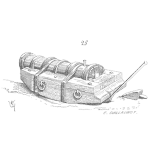
Proper control chart selection is critical to realizing the benefits of Statistical Process Control. Many factors should be considered when choosing a control chart for a given application. These include:
Your Reliability Engineering Professional Development Site
This article series explores essential concepts and methods for deploying Statistical Process Control (SPC) and Design of Experiments (DOE) effectively in your production operation. The articles focus on essential concepts as well as important topics that often not covered in basic SPC or DOE training programs. Some related statistical methods are also covered in a few of the articles
by Steven Wachs Leave a Comment

Proper control chart selection is critical to realizing the benefits of Statistical Process Control. Many factors should be considered when choosing a control chart for a given application. These include:
by Steven Wachs Leave a Comment

Statistically based DOE provides several advantages over more simplistic approaches such “one-factor-at-a-time” experimentation. These advantages include:
This article will explore the first two advantages in a bit more detail. The second two advantages will be discussed in the next article post. [Read more…]
by Steven Wachs Leave a Comment

Statistical Process Control charts have been called the Voice of the Process. Progressive manufacturers utilize control charts to “listen” to their processes so that potentially harmful changes will be quickly detected and rectified. However, not all SPC programs deliver to their highest capability as there are many elements to get right to achieve maximum utility. Highly effective SPC programs combine technical competencies, such as using an appropriate chart and sample size for the application, with effective management techniques such as enabling operator buy-in and involvement. This article identifies ten keys that unleash the power of SPC. [Read more…]
by Steven Wachs Leave a Comment

Process Stability and Process Capability are both extremely important aspects of any manufacturing process. Often the concepts behind process stability and process capability and the relationship between them are misunderstood. This article attempts to clarify both ideas and the relationship between them. [Read more…]

When planning and designing an experiment, it may be tempting to try and accomplish all the objectives is a single experiment. The thinking is often that experimentation is time consuming and expensive, so one experiment must be better than multiple experiments.
However, in general, it is a good idea to plan for multiple experiments which often is a much more efficient approach. We like to think of experimentation as a methodology that is best implemented in phases. We define experimental phases as: [Read more…]
by Steven Wachs Leave a Comment

Experimentation is frequently performed using trial and error approaches which are extremely inefficient and rarely lead to optimal solutions. Furthermore, when it’s desired to understand theeffect of multiple variables on an outcome (response), “one-factor-at-a-time” trials are often performed. Not only is this approach inefficient, it inhibits the ability to understand and model how multiple variables interact to jointly affect a response. Statistically based Design of Experiments provides a methodology for optimally developing process understanding via experimentation. [Read more…]
by Steven Wachs Leave a Comment

Ask people involved with the design and manufacture of a product the following question: “What is Quality?” Many if not most of the responses will be some form of the following: “Quality is ensuring that our products meet the customer (or engineering) specifications. Unfortunately, this leads to a “conformance to specifications” or a “Product Control” approach to quality. [Read more…]
 Ask a question or send along a comment.
Please login to view and use the contact form.
Ask a question or send along a comment.
Please login to view and use the contact form.